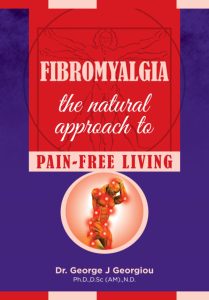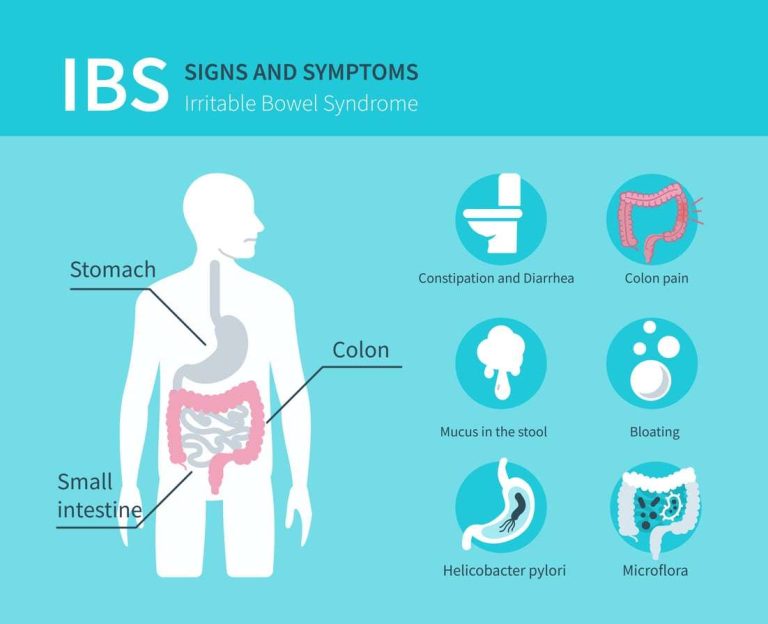Diets Now and Then
Some time ago I presented a lecture to the Oxford University Society in Cyprus with the above mentioned title. Judging from the comments of the group, of which some were doctors and scientists, it was a real eye-opener for the majority. I would like to share the lecture with you, and would welcome your comments.
One would like to think that our society is progressing, and that the quality of our health has greatly improved compared to that of our ancestors. But is this truly the case? Has modern technology been instrumental in improving the health of the nations? If we do a little research into our ancestor’s health and nutrition, we come up with quite the opposite – that they were a lot healthier, even though they ate what modern-day nutritionists tend to oppose. The trends that are common today were non-existent in the days of old – one in three people in the Western world develop cancer and almost half suffer from heart disease! The pseudo-thinkers of today believe that this health crisis will be solved by more technology, particularly the giant pharmaceutical companies that spend millions on developing drugs to patent, in order to make billions profits. Let’s take a closer look!
HEALTH AND DENTITION
Back in the 1930’s a very astute and observant dentist from Cleveland, Ohio, Dr. Weston Price, was reluctant to accept that the rampant decay, crowded and crooked teeth and “facial deformities” caused by overbites, narrowed faces, underdevelopment of the nose, lack of well-defined cheekbones and pinched nostrils were normal. He was particularly alarmed when he observed these in very young children, which also suffered from many other complaints such as frequent infections, allergies, anemia, asthma, poor vision, lack of coordination, fatigue and behavioural problems.
These problems are also very familiar to mothers in the 21st century. Price did not believe that such “physical degeneration” was God’s plan for mankind, as he had heard of many “backward” societies that were a lot healthier than his patients. He decided to close down his busy practice and travel the world for a few years studying distant people such as Eskimos, Indian tribes in Canada and the Florida Everglades, Southsea Islanders, Aborigines in Australia, Maoris in New Zealand, Peruvian and Amazonian Indians and tribesmen in Africa.
When he gained the confidence of the tribal or village elders, he did what came naturally to him – he counted dental caries and cavities. What he found was truly astounding – less than 1% of permanent teeth were decayed. He found 14 isolated groups in all were tooth decay was rare to non-existent, in people who had never seen a dentist and had never brushed their teeth. There was also a direct correlation between freedom from caries, and freedom from other diseases. Diseases that are common today such as cancer and heart disease, as well as infectious diseases that were common in Price’s day such as TB were absent from these “primitive” people.
Dr. Price took hundreds of photos on his travels which are preserved in a book considered as a masterpiece by many nutrition researchers entitled “Nutrition and Physical Degeneration, 1945, Price-Pottenger Nutrition Foundation, San Diego, CA.”
THE DIETS OF THE HEALTHY PRIMITIVES
The diets of these people were all different. In the Swiss village where Price began his investigations, the inhabitants lived on rich dairy products – unpasteurized milk (not the modern, denatured milk that is pasteurised, homogenized, stripped of its valuable fat content, filled with antibiotics and pesticides, laced with additives and synthetic vitamins and comes from cows bred to produce huge amounts of milk from eating anything else apart from their natural grass), butter, cream and cheese – dense rye bread, meat on occasions, bone broth soups and a few vegetables that they cultivated in the summer. The children’s teeth were covered in green slime, but he only found 1% tooth decay.
Hearty Gaelic fishermen living off the coast of Scotland consumed no dairy products. Fish formed the mainstay of the diet, along with oats made into porridge and oatcakes. Fishheads stuffed with oats and chopped fish liver was a traditional diet and one thought very important for growing children.
The Eskimo diet, composed largely of fish, fish roe and marine animals, including seal oil and blubber, allowed Eskimo mothers to produce one sturdy baby after another without suffering any health problems or tooth decay.
Well built, strong hunter-gatherers in Canada, the Everglades, the Amazon, Australia and Africa consumed game animals, particularly parts such as organ meats, blood, marrow and glands, particularly the adrenal glands – and a variety of grains, tubers, vegetables and fruits that were available.
African cattle-keeping tribes like the Masai consumed no plant foods at all – just meat, blood and milk. Southsea islanders and the Maori of New Zealand ate seafood of every sort – fish, shark, octopus, shellfish, sea worms – along with pork meat and fat, and a variety of plant foods including coconut, manioc and fruit. Whenever these isolated peoples could obtain sea foods they did so – even Indian tribes living high in the Andes. Insects were another common food, in all regions except the Arctic. These natural foods allowed the people from so many different races to be healthy – meat with its fat, organ meats, whole meat products, fish, insects, whole grains, tubers, vegetables and fruits
FALLACIES OF MODERN NUTRITIONISTS
Modern investigators find it hard to accept the fact that these “primitive” groups of people can be so healthy when eating saturated fat, when modern nutritionists have demonised saturated fat and correlated it with heart disease and cancer. If one studies statistical trends, however, one finds that when people were eating traditional fats like butter, lard and tallow, made from organic milk and animals, these dreaded diseases were still at a lowish ebb. It was only when traditional fats were replaced by commercial vegetable oils that cancer and heart disease have soared.
Saturated fatty acids constitute at least 50% of the cell membranes, giving them necessary stiffness and integrity, they play a vital role in the health of our bones, they lower Lipoprotein A, a substance in the blood that is a good indicator of heart disease, they protect the liver from alcohol ingestion, they enhance the immune system, they are needed for the proper utilization of essential fatty acids, they are the preferred food for the heart, and they have important antimicrobial properties, protecting us against harmful microorganisms in the digestive tract.
SATURATED FAT, VITAMIN A & D AND THE “X” FACTOR
Animal fats are carriers of vital fat-soluble vitamin such as A and D, needed for prevention of birth defects, health of the immune system, and proper development of bones and teeth. Price was convinced that these “fat-soluble activators” were responsible for the perfect teeth with a band of dazzling whiteness, no crooked teeth, broad, round faces and an absence of disease. When he analysed these diets he found that they contained at least 4 times the minerals – calcium, phosphorus, magnesium and iron, and TEN times the fat-soluble vitamins that consisted the American diet of his day.
The richest sources of vitamin A and D are the very foods that modern man tends to avoid for fear of developing disease – organ meats, lard, fish eggs, shellfish, eggs and butter – but not commercial store-bought butter. It is the healthy butter that is a soft, orange-yellow product that comes only from cows eating green grass on fertile pastures. A surprising source of nutrients in traditional diets is shrimp, which contains ten times more vitamin D than liver. Shrimp sauces and shrimp pastes made from dried shrimp, and therefore a concentrated source of vitamin D that is used throughout Africa and the Orient. This is the most likely explanation for low rates of osteoporosis, colon cancer and multiple sclerosis in these areas.
Price also discovered another fat-soluble vitamin that was a more powerful catalyst for nutrient absorption than vitamins A and D. He called it “Activator X” or the “X Factor.” All the healthy groups Price studied had the X Factor in their diets. It could be found in certain special foods which these people considered sacred – cod liver oil, fish eggs, organ meats and the deep yellow Spring and Fall butter from cows eating rapidly growing green grasses. Price used the combination of high vitamin butter and cod liver oil with great success to treat osteoporosis, tooth decay, arthritis, rickets and failure to thrive in children.
IN COME THE COMMERCIAL FATS & DISEASE
The “experts” assure us that decreased animal fats and cholesterol in the diet reduces death from heart disease and increases life span. If we consider the following we find that there is very little evidence to support this presupposition:
* Before 1920 coronary heart disease was rare in the USA. From 1910 to 1970, the proportion of animal fat in the American diet declined from 83% to 62%, and butter consumption plummeted from 18 lbs per person per year to 4lbs. During the past 80 years, dietary cholesterol intake has increased by 1%. During the same period the percentage of dietary vegetable oils in the form of margarine, shortening and refined oils increased about 400% while the consumption of sugar and processed foods increased about 60%. Today heart disease causes at least 40% of all US deaths. Can we blame these deaths on the increase of saturated fats, or commercial fats and refined produce?
* The Framingham Heart Study is often cited as proof of the lipid hypothesis. This study began in 1948 and involved 6,000 people from the town of Framingham, Massachusetts. Two groups were compared at 5-year intervals – those that consumed little cholesterol and saturated fat and those that consumed large amounts. After 40 years that Director of the study had to admit: “In Framingham, Mass, the more saturated fat one ate, the more cholesterol one ate, the lower the person’s serum cholesterol ….. we found that people who ate the most cholesterol, ate the most saturated fat, ate the most calories, weighed the least and were the most physically active.” Does this sound like the correlation between weight gain and cholesterol that we have been brain-washed into believing is true?
* In another longitudinal study in Britain which involved several thousand men, half were asked to reduce saturated fat and cholesterol in their diets, to stop smoking and to increase the amounts of unsaturated oils such as margarine and vegetable oils. After one year, those on the “good” diet had 100% more deaths that those on the “bad” diet, in spite of the fact that the men on the “bad” diet continued to smoke!
* A Medical Research Council survey showed that men eating butter ran half the risk of developing heart disease as those using margarine.
Clearly something is wrong with the reports that we read in the media – which are propaganda for increasing sales of low-fat and cholesterol-free foods. Excess consumption of polyunsaturated oils has been shown to contribute to a large number of disease conditions including increased cancer and heart disease, immune system dysfunction, damage to the liver, reproductive organs and lungs, digestive disorders, depressed learning ability, impaired growth and weight gain.
One reason why polyunsaturated fats cause so many health problems is that they tend to oxidize and become rancid easily when subjected to heat, oxygen and moisture, as often occurs during cooking and processing. Rancid oils are characterized by free radicals – extremely reactive compounds that attack body cells and cause damage in DNA/RNA strands thus triggering mutations in tissues and cells.
WHAT ABOUT SEEDS AND GRAINS?
Generally, nutritionists recommend that seeds and grains be part of our healthy diet. What they have overlooked, however, is that grains, legumes and nuts are prepared with great care in traditional societies, by sprouting, roasting, soaking, fermenting and sour leavening. Research has shown that legumes and grains contain enzyme inhibitors which help the seed hibernate for long periods of time – it is part of their natural cycle. However, when these inhibitors enter our bodies, they can inhibit a variety of enzyme systems, and additional phytic acid present in the bran of all grains, can prevent the absorption of calcium, magnesium, iron, copper and zinc. The proper preparation of the legumes and grains can help to overcome these natural inhibitors to proper digestion.
Germination increases the enzyme activity of seeds by as much as 6 times, and therefore releases the harmful enzyme inhibitors. The process of sprouting or germination of seeds also increases vitamins B2, B5 and B6. Carotene increases dramatically – sometimes eight-fold. Complex sugars responsible for intestinal gas are broken down during sprouting, and a portion of the starch in grain is transformed into sugar. Sprouting inactivates aflotoxins, potent carcinogens found in grains. Finally, numerous enzymes that help digestion are produced during the germination process.
Soaking grains and seeds, which helps them ferment with natural bacteria, is also another way of breaking down phytic acid and enzyme inhibitors. For example, in India, rice and lentils are fermented for at least two days before they are prepared as idli and dosas; in Africa, the natives soak coarsely ground corn overnight before adding it to soups and stews and they ferment corn or millet for several days to produce a sour porridge called ogi; a similar dish made from oats was traditional among the Welsh; in some Oriental and Latin American countries rice receives a long fermentation before it is prepared; Ethiopians make their distinctive injera bread by fermenting a grain called teff for several days; Mexican corn bread cakes, called pozol, are fermented for several days and for as long as two weeks in banana leaves. So, yes, grains and legumes are healthy, but only if they are prepared in the proper way to help nature rid herself of the protective mechanisms she has developed.
WHAT IS THE BEST DIET?
Weston Price’s studies convinced him that the best diet was one that combined nutrient-dense whole grains, with animal products, particularly fish. The healthiest African tribe that he studied was the Dinkas, a Sudanese tribe on the Western bank of the Nile. Their diet consisted mainly of fish and cereal grains. This is one of the most important lessons of Price’s research – that a mixed diet of whole foods, one that avoids the extremes of the carnivorous Masai and the largely vegetarian Bantu, ensures optimum physical development.
So, we can put butter on our porridge and cook in lard; it is OK to consume whole milk, fatty meats, liver and onions, lox and cream cheese, shrimp and lobster, even insects if you like them, and the heavenly sauces made from bone broth and cream confer. All these foods are far superior in nutritional value than the degraded, processed, pasteurized, homogenized and preserved foods with fortified synthetic vitamins that are commonplace in today’s modern society.
A finishing note that we should all be striving for, and the more of us talk, the more voices there will be to instigate changes. We NEED to push for more organic produce – the soft, creamy-orange butter that comes from cows that eat natural grass, organic meats that are fed what nature intended them to eat, not the processed foods and additives that are commonly used today; we need to push for more organic vegetables and fruit to gain the full benefit of the nutrients, without added chemicals and artificial chemical fertilizers which are nutrient-deficient. Lastly, we need to research alternative, more traditional ways of preparing our food in order to get the full nutritional benefits.
One of the excellent books that I have used extensively to prepare this lecture which I highly recommend every household to own is entitled “Nourishing Traditions: A Cookbook That Challenges Politically Correct Nutrition and the Diet Dictorates by Sally Fallon and Mary Enig. This is available on amazon.com and is also in Kindle version.
Dr. Weston Price’s masterpiece entitled “Nutrition and Physical Degeneration” is also available on amazon.com.
Read other interesting articles such as:










